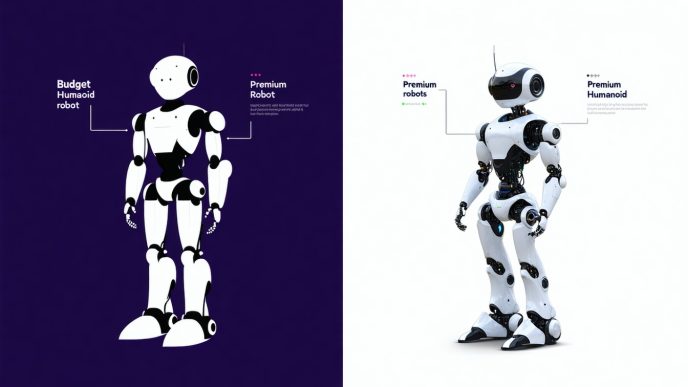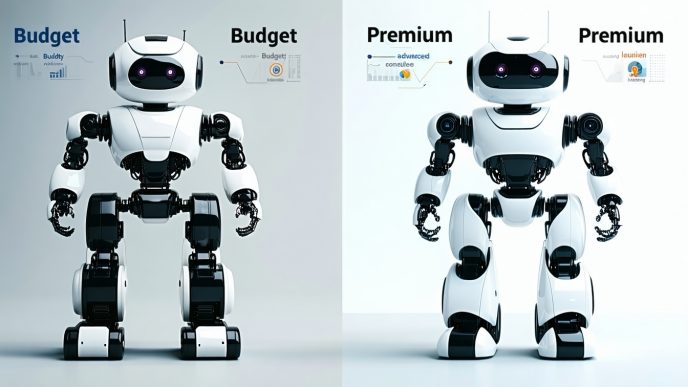Exploring Voice Recognition Navigation
In the context of robotic systems, voice recognition navigation has become an essential feature that enhances user interaction and functionality. This section delves into how voice recognition technology operates and the advantages it offers in smart devices.
How Voice Recognition Technology Works
Voice recognition technology utilizes advanced algorithms and artificial intelligence to interpret spoken commands. It involves several key processes:
- Sound Wave Capture: A microphone records audio input and converts sound waves into digital signals.
- Signal Processing: The software analyzes the digital signals, filtering out background noise and focusing on the spoken words.
- Speech Recognition: The system matches the processed signals against a database of known phrases and commands to understand the user’s intent.
- Response Generation: Once a command is recognized, the system executes the required action or retrieves the necessary information, providing feedback to the user.
The effectiveness of this technology can vary based on several factors, including the quality of the microphone, ambient noise levels, and the sophistication of the AI algorithms used.
Benefits of Voice-Activated Navigation Systems
Voice-activated navigation systems offer numerous advantages for users. Here are some key benefits:
| Benefit | Description |
|---|---|
| Hands-Free Operation | Enables users to operate devices without physical interaction, increasing safety and convenience. |
| Increased Accessibility | Assists individuals with disabilities or mobility issues, making technology more inclusive. |
| Efficiency | Allows for quick access to navigation features, reducing user effort and improving overall experience. |
| Real-Time Updates | Provides instant information about routes, traffic conditions, and alternative paths, enhancing navigation accuracy. |
| Integration | Offers seamless compatibility with other smart home devices and applications, creating a unified ecosystem. |
Voice-activated navigation systems can significantly improve user experience and performance compared to traditional methods of interaction. As value-conscious buyers weigh options, understanding the capabilities of these systems becomes essential when considering the debate of budget AI assistants vs premium AI assistants.
Budget AI Assistants
When considering options for voice recognition navigation, budget AI assistants appeal to value-conscious buyers looking for cost-effective solutions. These devices come with various features and limitations that differentiate them from their premium counterparts.
Features and Limitations of Budget AI Assistants
Budget AI assistants often include essential functions for basic voice recognition and navigation needs. Below is a comparison of typical features and limitations of these devices:
| Feature | Description |
|---|---|
| Voice Recognition | Basic voice commands for navigation and task execution. May struggle with accents or background noise. |
| Navigation Accuracy | Reasonably accurate but may lack advanced map updates or real-time traffic integration. |
| Smart Home Integration | Limited compatibility with smart home devices compared to premium options. |
| User Interface | Basic designs with fewer customizable options. User-friendly but not sophisticated. |
| Durability | Often made with less expensive materials, which may affect longevity. |
While budget AI assistants provide essential functionality, they may not include advanced features found in premium AI systems, such as enhanced voice recognition capabilities or superior navigation systems. For more information on navigation options, visit our article on navigation systems budget vs premium robots.
Cost-Effective Options for Voice Recognition Navigation
Budget AI assistants present appealing options for those looking at initial costs. Here are some cost-effective choices for voice recognition navigation:
| Option | Price Range | Key Feature |
|---|---|---|
| Basic Voice Recognition Assistants | $50 – $100 | Simple voice commands, basic navigation |
| Entry-Level Smart Speakers | $70 – $130 | Integrated voice recognition with streaming options |
| Budget Humanoid Robots | $100 – $400 | Limited interaction, basic navigation and tasks |
| Budget Companion Robots | $200 – $500 | Fun interactions, minimal navigation capabilities |
These budget options provide the fundamental features needed for navigation, suitable for users who prioritize affordability over advanced tech. For more comparisons, check our articles on budget humanoid robots vs premium humanoid robots and budget companion robots vs premium social robots.
In summary, while budget AI assistants serve their purpose effectively in certain scenarios, they come with constraints in features and durability. Users should weigh these aspects when considering their options in the realm of budget AI assistants vs premium AI assistants.
Premium AI Assistants
Premium AI assistants offer numerous advanced features and functionalities that set them apart from their budget counterparts. These sophisticated devices are designed to enhance user experience, improve efficiency, and provide reliable performance.
Advanced Features of Premium AI Assistants
The distinction between budget AI assistants and premium models often lies in the advanced features available. Premium options typically include the following:
| Feature | Description |
|---|---|
| Enhanced Voice Recognition | Premium AI assistants often utilize advanced algorithms and machine learning to improve their ability to understand diverse accents and speech patterns. |
| Multimodal Interaction | These assistants support visual displays and touchscreen interfaces, allowing users to interact in multiple ways, beyond voice commands. |
| Integration with Smart Home Devices | They provide seamless connectivity to various smart home products, enabling centralized control and automation. |
| Personalization Options | Premium models can learn user preferences over time, offering tailored recommendations and settings based on individual habits. |
| Advanced Navigation Systems | Equipped with superior navigation capabilities, premium AI assistants can utilize real-time data for precise routing and traffic updates. For insights on navigation systems in robots, explore our article on navigation systems budget vs premium robots. |
Investment Value of Premium AI Assistants
While the upfront cost of premium AI assistants is higher, the long-term investment value can be significant. These devices often present a better overall return on investment due to several factors such as durability, features, and maintenance costs.
| Considerations | Budget AI Assistants | Premium AI Assistants |
|---|---|---|
| Initial Cost | Lower initial investment | Higher initial cost |
| Durability | Shorter lifespan, prone to wear | Extended durability, built to last |
| Maintenance Costs | Potentially higher over time | Generally lower with long-lasting features |
| Battery Life | Often shorter, may need frequent charging | Extended battery performance, reducing downtime |
| Return on Investment | May offer quick savings but limited functionality | Higher initial cost, but extensive capabilities provide enhanced value |
For more information on maintenance costs, read our article on robot maintenance costs budget vs premium. Premium AI assistants deliver enhanced performance, making them an appealing choice for those who value reliability and advanced capabilities in their technology. Comparing aspects of budget AI assistants and premium AI assistants highlights the potential for greater satisfaction and efficiency with an investment in a higher-end model.
Smart Features Comparison
The comparison between budget AI assistants and premium AI assistants reveals significant differences in the smart features available in each category. Understanding these features can help users make informed decisions based on their needs and preferences.
Additional Smart Features in Budget AI Assistants
Budget AI assistants come with various smart features aimed at providing essential functionality without the added costs. These features often include:
| Smart Features | Description |
|---|---|
| Basic Voice Commands | Users can perform simple tasks like setting alarms, checking the weather, and playing music. |
| Limited Integration | Basic compatibility with smart home devices but may require additional setup or third-party apps. |
| Basic Voice Recognition | Functionality to recognize a limited number of commands and may struggle with accents or noise. |
| Pre-set Responses | Offers a set of pre-configured responses for common queries, but lacks customizable features. |
These features cater well to users looking for basic assistance but may fall short in providing a fully integrated experience expected in the modern smart home.
Enhanced Smart Features in Premium AI Assistants
On the other hand, premium AI assistants stand out with a suite of enhanced features that significantly improve usability and integration with various devices. Some of these advanced features include:
| Smart Features | Description |
|---|---|
| Advanced Voice Recognition | Capable of understanding various accents and complex sentences, which offers a more natural interaction experience. |
| Extensive Device Integration | Seamless compatibility with a wide range of smart home devices and platforms, allowing for extensive automation scenarios. |
| Customizable Skills | Users can develop or download new skills that can be integrated into the assistant’s system, enhancing functionality. |
| Contextual Awareness | Ability to maintain context in conversations, enabling more fluid interactions and better understanding of user intent. |
While budget options serve basic needs, premium AI assistants offer a more dynamic and adaptable experience that aligns with the evolving expectations of users.
For a deeper dive into the details of the differences between budget and premium robots, explore our articles on budget vs premium robots and return on investment for budget vs premium robots.
User Experience and Performance
Usability of Voice Recognition Systems
Usability is a critical factor in evaluating voice recognition systems, particularly for budget AI assistants and premium AI assistants. Effective usability ensures that users can navigate the technology with ease, maximizing satisfaction and minimizing frustration.
Budget AI assistants often come with basic voice recognition features that may lack advanced customization options. While these systems are generally user-friendly, their performance can be inconsistent in various environments, especially in noisy settings. Users may experience issues with misinterpretations or a lack of responsiveness, which can hinder the overall experience.
In contrast, premium AI assistants typically offer a more refined user experience. These systems often feature advanced algorithms that improve accuracy and responsiveness, providing users with reliable interaction. Moreover, premium assistants may include customizable commands and personalized settings that enhance usability.
| Feature | Budget AI Assistants | Premium AI Assistants |
|---|---|---|
| Accuracy | Moderate | High |
| Customization | Limited | Extensive |
| User Feedback | Basic | Advanced |
| Noise Resistance | Low | High |
Performance Comparison: Budget vs Premium AI Assistants
When comparing performance between budget and premium options, several key aspects come into play, including voice recognition accuracy, response time, and overall functionality.
Budget AI assistants tend to have slower response times compared to their premium counterparts. Users may notice delays when issuing commands, which can be frustrating during interactions. Additionally, the accuracy of voice recognition tends to be lower, leading to more frequent misunderstandings.
On the other hand, premium AI assistants generally excel in all performance metrics. They often feature faster processors and higher-quality microphones, resulting in quicker response times and greater accuracy during voice recognition. Premium systems are also designed to adapt to individual users’ voices better, making them more effective for regular interactions.
| Performance Metric | Budget AI Assistants | Premium AI Assistants |
|---|---|---|
| Response Time | 2-5 seconds | 0.5-2 seconds |
| Recognition Accuracy | 70-80% | 90-95% |
| Functionality Features | Basic | Extensive |
| Adaptability | Low | High |
Both usability and performance are crucial considerations for users deciding between budget AI assistants vs premium AI assistants. Understanding the differences in user experience can help value-conscious buyers and tech enthusiasts make informed decisions based on their needs and preferences.
Long-Term Reliability
When it comes to selecting between budget AI assistants and premium AI assistants, long-term reliability is a crucial factor. This section will explore the durability and longevity of budget AI assistants alongside the reliability and maintenance of premium AI assistants.
Durability and Longevity of Budget AI Assistants
Budget AI assistants generally offer a more accessible entry point for consumers; however, they often come with certain limitations regarding durability and lifespan. Many budget models are constructed with less expensive materials, which can impact their resilience over time. Below is a comparison of durability factors in budget AI assistants.
| Factor | Description | Rating (1-5) |
|---|---|---|
| Build Quality | Lower-grade materials may lead to wear and tear | 2 |
| Lifespan | Expected lifespan is often shorter compared to premium options | 3 |
| Warranty | Typically limited warranties available | 2 |
| Repairability | May have more difficulty getting parts or support | 3 |
Because of these factors, budget AI assistants may require replacements or repairs sooner than their premium counterparts. While initial savings are significant, potential long-term costs associated with higher maintenance and earlier replacements should be taken into account. For a deeper dive into the implications of cost, check our article on robot maintenance costs budget vs premium.
Reliability and Maintenance of Premium AI Assistants
Premium AI assistants are designed for enhanced reliability and durability. These models utilize high-quality materials and advanced construction techniques, which contribute to their overall life expectancy and performance. Here is a breakdown of key reliability factors in premium AI assistants.
| Factor | Description | Rating (1-5) |
|---|---|---|
| Build Quality | Superior materials ensure stronger, more durable devices | 5 |
| Lifespan | Often designed for long-term use with better technology | 5 |
| Warranty | Usually includes extended warranties for peace of mind | 4 |
| Repairability | Easier access to parts and technical support | 4 |
The investment in a premium AI assistant generally translates into fewer repairs and replacements over time, leading to a better return on investment. Long-term reliability can also enhance user satisfaction. For insights on comparing investments, refer to our article on return on investment for budget vs premium robots.
Overall, while budget AI assistants can fulfill immediate needs at a lower cost, consumers should consider the longevity and reliability of their investment by comparing the durability of budget AI assistants vs premium AI assistants.















